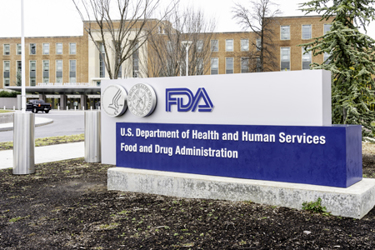FDA Adopts ICH Guidance On Assessing Nonclinical Biodistribution Of Gene Therapy Viral Vectors
By Tim Sandle, Ph.D.

Gene therapy products are required to be safe, stable, of low toxicity, and of a particular cell type specificity. In some cases, viral vectors are engineered to infect a wide range of cell types; in other cases, the viral vector is modified (pseudotyped) to target a specific kind of cell.1 An important step in the development process is assembling biodistribution data in relation to the intended clinical population. Developing an accurate biodistribution profile is influenced by factors such as the route of administration, dose level(s), dosing regimen, and the animal immune response to the gene therapy product.
While animal models remain important, biotechnology firms are reducing their use of animal models for targeting viral vectors and, at the same, are seeking more efficient nonclinical assessment methods. A new ICH guidance S12 (adopted by the FDA in May 2023 and planning to be adopted by the EMA in September 2023) provides the regulatory expectations around these nonclinical approaches.2 This is the first internationally harmonized guideline that specifically addresses an important nonclinical development component of gene therapy products. This article reviews the key points from the guidance.
Gene Therapy And Biodistribution
Biodistribution is the process for identifying target tissues and organs in the body and for assessing safety and efficacy, particularly in relation to nontarget sites during early-phase clinical trials (including blood, cerebrospinal fluid, and vitreous fluid). As well as distribution, the assessment extends to the persistence and eventual clearance of vectors. The concept applies to a range of different medicines and medical interventions, including gene therapy products. Individual studies need to be conducted based on the specific vectors (including viruses) used in gene therapy products.
Traditionally, biodistribution studies require in vivo administration in suitable animals. In recent years, a number of initiatives have sought to reduce the use of animals in pharmaceutical drug development (notably the 3Rs [reduce/refine/replace] initiative).3 A further reason to consider alternatives is that many traditional animal models come with limitations with regard to their relevance and extrapolation to humans.4 By using animals more sparingly and utilizing data collected with analytical instruments, alternative biodistribution assessments of gene therapy products can be made.
As an example, with gene therapy, the gene delivery vector can be visualized based on a property of the vector, such as the particle biodistribution (achieved by labeling viruses) or the transduction pattern (the specific delivery of genes by the vector to the target, where fluorescence intensity varies by target cell and vector).5
ICH Guidance
The ICH guidance seeks to provide harmonized recommendations for the biodistribution component of a nonclinical development program of gene therapy products in order to facilitate robust clinical trial design (such assessments need to be completed prior to the initiation of the first-in-human clinical trial). The guidance states that these studies can be conducted as stand-alone biodistribution studies or used in conjunction with nonclinical pharmacology and toxicology studies.
The guidance provides a number of good practice recommendations for strengthening biodistribution studies.
Animal Selection
- The biodistribution assessment needs to be conducted in a biologically relevant animal species that is permissive for transfer and expression of the genetic material.
- In selecting the animals, an appropriate number of animals per sex should be evaluated at predetermined sampling time points to generate sufficient biological data.
- The preexisting immunity in animals against a gene therapy vector must be understood. Immunity has the potential to affect the biodistribution profile.
- When administering the gene therapy product into the animals, this should be performed using the intended clinical route of administration.
Sampling
- For evaluation, a rationale needs to be produced to select the appropriate time points, such as the anticipated time to reach peak, steady-state (plateau), and declining levels of the gene therapy product.
- With the types of samples to be selected, a core panel of tissues and biofluids needs to be considered, such as blood, injection site(s), gonads, adrenal gland, brain, spinal cord (cervical, thoracic, and lumbar), liver, kidney, lung, heart, and spleen.
- A biodistribution assessment of the administered gene therapy product needs to be conducted in the gonads for both sexes (unless not doing so can be scientifically justified). If there is the persistent presence of the gene therapy product in gonads, this should trigger a review of the need for additional studies to determine gene therapy product levels in the specific type of cells within the gonad (including oocytes, sperm, Sertoli cells, and Leydig cells).
Analytical Method Selection
- For the selected analytical methods, the assessment of biodistribution must be determined by quantitating the amount of genetic material (DNA/RNA) of the gene therapy product in the samples.
- Validation of the bioanalytical methods may not be needed before the first clinical study. However, the suitability of the used method should be provided.
- The analytical methods selected need to be capable of detecting the genetic material at the required limit of sensitivity and specificity. The assay should also demonstrate good reproducibility as part of analytical methods development. An example of a suitable method is qPCR.
- The level of reporting needs to be understood, such as vector genomes to milligram of genomic DNA.
Cases When Biodistribution Studies Are Not Required
There are circumstances when biodistribution studies can be avoided. This scenario requires a scientific rationale, based on factors like dose levels, regimen, and the route of administration, together with an assessment as to whether existing biodistribution data obtained from earlier nonclinical studies conducted with the same gene therapy product will, in fact, support a different clinical indication for a new clinical population. Another reason is that it is unfeasible. This could be because there are no biologically relevant animal species to provide a realistic biodistribution profile in the clinical population.
Importance Of Biodistribution Studies
The ICH guidance provides an opportunity to reduce the use of animals and to collate more meaningful data. This is essential for embarking on the next clinical trial phase and to build a better understanding of the potential correlation of the findings (desired and undesired) to the administered gene therapy product, as well as to establish a benefit: a risk profile of the gene therapy product ahead of administration int humans.
References:
- Nie, J. Liu, L., Wang, Q. et al. (2019) Nipah pseudovirus system enables evaluation of vaccines in vitro and in vivo using non-BSL-4 facilities. Emerging Microbes & Infections. 8 (1): 272–281
- FDA. S12 Nonclinical Biodistribution Considerations for Gene Therapy Products Guidance for Industry, U.S. Department of Health and Human Services, 2023: https://www.fda.gov/media/167605/download
- National Research Council. Recognition and Alleviation of Distress in Laboratory Animals. National Academies Press; Washington, DC, USA: 2008. p. 122
- Lima, B. and Videria, M. (2018) Toxicology and Biodistribution: The Clinical Value of Animal Biodistribution Studies. Molecular Therapy—Methods & Clinical Development; 8:183-197
- Vite C.H., Passini M.A., Haskins M.E., Wolfe J.H. (2003) Adeno-associated virus vector-mediated transduction in the cat brain. Gene Ther. 10:1874–1881
About The Author:
 Tim Sandle, Ph.D., is a pharmaceutical professional with wide experience in microbiology and quality assurance. He is the author of more than 30 books relating to pharmaceuticals, healthcare, and life sciences, as well as over 170 peer-reviewed papers and some 500 technical articles. Sandle has presented at over 200 events and he currently works at Bio Products Laboratory Ltd. (BPL), and he is a visiting professor at the University of Manchester and University College London, as well as a consultant to the pharmaceutical industry. Visit his microbiology website at https://www.pharmamicroresources.com.
Tim Sandle, Ph.D., is a pharmaceutical professional with wide experience in microbiology and quality assurance. He is the author of more than 30 books relating to pharmaceuticals, healthcare, and life sciences, as well as over 170 peer-reviewed papers and some 500 technical articles. Sandle has presented at over 200 events and he currently works at Bio Products Laboratory Ltd. (BPL), and he is a visiting professor at the University of Manchester and University College London, as well as a consultant to the pharmaceutical industry. Visit his microbiology website at https://www.pharmamicroresources.com.
